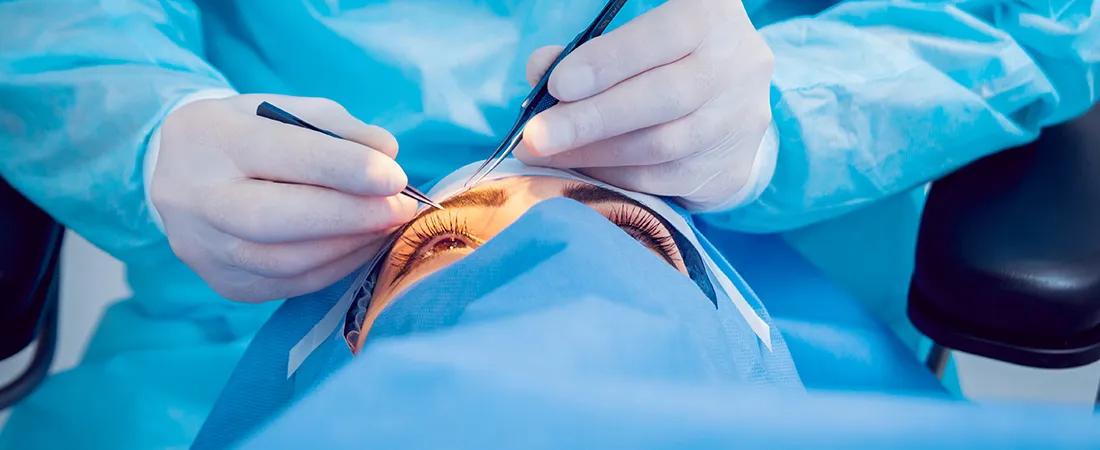
5 Advantages of cataract laser surgery
With age, various eye conditions can affect our eyesight, and cataracts are among the most common culprits. Cataracts cloud the lens of the eye, leading to blurry vision and a decrease in visual clarity. Traditionally, cataract surgery involved the use of blades and ultrasound to remove the cataract, but with technological advancements, a new approach has emerged – cataract laser surgery.
Understanding Traditional vs. Cataract Laser Surgery
Traditional cataract surgery, while effective, had its limitations. The use of ultrasound to break down dense cataracts sometimes compromises the quality of vision post-surgery. Manual incisions lacked the precision necessary for optimal results. Enter laser-assisted cataract surgery, also known as Femtosecond Laser Cataract Assisted Surgery (FLACS).
Laser-Assisted Cataract Surgery
Laser-assisted cataract surgery harnesses the power of computer-controlled robotic instruments to achieve surgical precision like never before. Unlike the manual blade incisions used in traditional methods, lasers are employed to create the necessary incisions for both Phaco and MICS (Micro-incision cataract surgery) procedures. But the benefits of lasers don’t stop there – they’re also used to soften and segment the cataract into manageable pieces, facilitating its gentle removal. Additionally, lasers aid in the insertion of the new Intraocular Lens (IOL), ensuring a comprehensive approach to the surgery.
Advantages of Cataract Laser Surgery
Enhanced Vision: Precision Redefined in Cataract Surgery
The eyes are our windows to the world, and when cataracts cloud those windows, the view becomes hazy and indistinct. Unlike conventional cataract surgery, where manual incisions and ultrasound were the go-to tools, cataract laser surgery introduces a new level of accuracy. The precision offered by lasers ensures that every step of the surgery, from creating incisions to removing the clouded lens, is executed with utmost accuracy.
The laser’s controlled energy gently breaks down the cataract into manageable pieces, allowing for its smooth removal. This contrasts with the sometimes harsh use of ultrasound in conventional procedures, which could inadvertently compromise the quality of vision post-surgery.
Unparalleled Precision: Safeguarding Surgical Excellence
Surgery of any kind demands precision, and in Cataract Removal Procedure, precision can make all the difference between a successful outcome and potential complications.
Manual incisions, while skillfully executed, are subject to human variability. On the other hand, lasers bring consistency and accuracy to the process. The laser’s precision ensures that incisions are made with the exact dimensions required for optimal results, decreasing the chances of complications.
Rapid Recovery: Seizing the Day with Cataract Laser Surgery
Imagine undergoing a surgical procedure and returning home on the same day, ready to resume your normal activities. This is precisely what cataract laser surgery offers – a rapid recovery that empowers patients to seize the day without the extended downtime associated with traditional surgery.
Cataract laser surgery is typically performed as a day-care procedure, a testament to its minimally invasive nature. Unlike traditional methods that might require an overnight hospital stay, laser surgery allows patients to return home on the same day, promoting a sense of comfort and familiarity during the recovery period. Patients experience less discomfort and a faster return to their daily routines. With cataract laser surgery, the path to clear vision is not only precise but also swift.
Astigmatism Correction: Beyond Cataract Cure
While cataract removal is the primary objective of cataract surgery, laser-assisted procedures go a step further by addressing another common visual issue: astigmatism. Astigmatism occurs due to irregularities in the curvature of the cornea or the eye’s lens, leading to distorted or blurred vision.
Cataract laser surgery brings astigmatism correction within reach. During the surgery, the same laser that assists in cataract removal is used to reshape the cornea or lens, correcting the irregularities causing astigmatism.
By incorporating astigmatism correction into the cataract surgery process, laser-guided techniques offer a comprehensive solution that addresses multiple visual concerns in a single procedure.
Non-Invasive and Bladeless: Embracing Safety and Healing
This non-invasive and bladeless nature of cataract laser surgery offers patients a safer and more comfortable experience. Unlike traditional methods that rely on manual incisions and cuts, cataract laser surgery is accomplished without the need for blades. Instead, lasers are employed to create precise incisions and gently break down the cataract. This minimizes the risk of infection, reduces tissue trauma, and promotes faster healing. With Cataract Removal Procedure, patients can experience a smoother and more comfortable recovery period, allowing them to focus on enjoying their newly improved vision without unnecessary concerns.
How to Choose the Best Doctor For Cataract Removal Procedure?
- Experience and Expertise: Look for a doctor who specializes in cataract surgery and has experience in performing laser-assisted procedures.
- Technology and Facilities: Ensure that the medical facility is equipped with state-of-the-art technology required for cataract laser surgery.
- Patient Reviews: Positive feedback from previous patients can be a good indicator of a doctor’s competence.
- Credentials: Check the doctor’s credentials, certifications, and affiliations with reputable medical organizations. Board-certified ophthalmologists with a focus on cataract surgery are often preferred choices.
- Personal Connection: A doctor who listens to your concerns, addresses your questions and makes you feel comfortable can contribute to a positive surgical experience.
- Hospital Affiliation: If the procedure is to be performed in a hospital setting, consider the hospital’s reputation, safety record, and the quality of post-operative care provided.
Key Takeaway
With increased advancement in science and technology, going under the needle becomes more and more safe. These points will help you understand why cataract laser surgery is on the rise and why no people these days opt for a manual cataract removal surgery.






